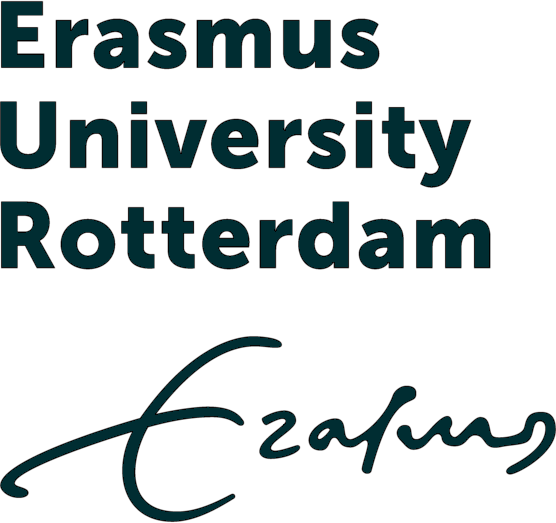
Erasmus University College
The Netherlands

Type
College

Students
200+

Started
2014

Location
Netherlands
Lecturer and PhD candidate Tristan Kik has been involved with Erasmus University College (EUC) since its founding in 2013.
Today, Tristan is the coordinator of the Economics major and the academic core course Core Economics in the bachelor’s programme Liberal Arts and Sciences. He also teaches microeconomics and statistics courses within this programme, which has around 217 students.
Tristan and his colleagues began using Sowiso in 2014 and introduced the AI Solution Bot this year. Discover how it has transformed their courses.
When Tristan Kik began teaching Microeconomics at Erasmus University College in 2014, he quickly noticed that students faced a significant challenge. For many, it was the first course in which they actively engaged with economic theory. This meant they had to apply mathematical methods—previously encountered mostly in isolated exercises—to a new, economic context.
“It’s not just about doing calculations,” Tristan explains. “Students need to extract the right mathematical strategy from a problem description, execute it correctly, and then translate the result back into the economic context. That’s quite a lot to handle when you’re just starting.”
It requires multiple skills: analysing a case, translating it into a mathematical model, performing the calculations, and interpreting the outcome within the economic framework. Many students found it challenging to make all those connections.
“Back then—ten years ago—there was no flexible, digital practice environment to support this process. Exams were still entirely paper-based. Students could get practice material, but it was static: the questions were always the same, with no possibility to endlessly vary the numbers and contexts,” Tristan continues. “I wanted a platform where students could practise at their own pace and without limits—one that truly understood the mathematics. Only then can you train the skill instead of training students to recognise fixed answers.”
In 2015, EUC became the first faculty within Erasmus University to start using Sowiso for the Microeconomics course.
“We started very small,” says Tristan. “A group of just thirty students, entirely optional. We imported exercises from Maple into Sowiso, and I added new content step by step to improve the existing exercises. The students’ feedback was so positive that we kept expanding it.”
The platform was used purely for practice, not for assessment. Thanks to the randomisation feature, students could practise endlessly with exercises that generated new numbers and contexts each time. This meant they learned the underlying method, not just a single trick.
“Practicing is a crucial part of the learning process,” says Tristan. “And the randomisation helps with that; it forces students to think through the approach each time, and it helps them truly master the mathematical method.”
A significant innovation was the introduction of the AI Solution Bot. Previously, questions were asked and answered via the forum—students would post their queries, and Tristan or a colleague would respond. But because of randomisation, each student had different numbers, meaning answers often had to be rewritten for each case—something that took considerable time.
With the AI Solution Bot, that changed completely. “I was genuinely surprised by how good the answers were,” says Tristan. “Even for my custom exercises—not just Sowiso’s standard material. The answers were detailed, well-structured, and tailored to the specific problem the student was working on. It saves me a huge amount of time.”
The bot turned out to be a timesaver for lecturers and an incentive for students to ask more questions. Tristan noticed an apparent increase in questions in the first-year Statistics course with 200 students. “It’s less intimidating to ask a bot than a lecturer. That barrier has definitely come down.”
To prevent students from jumping straight to the answer, Tristan decided to disable Sowiso’s Solution button.
“When you see the full answer, it’s easy to think: oh yes, that makes sense. But real learning happens when you figure it out yourself. With the AI Bot, students can ask targeted questions and receive hints without getting the complete solution immediately.”
The time saved thanks to the bot is used to improve exercises.
“If I see that many students are struggling with a particular problem, I sometimes use the AI Bot’s explanation as inspiration to rewrite the question or hint. This really improves the quality of the material.”
After ten years, Sowiso has become an integral part of the Microeconomics and Statistics courses at Erasmus University College. Students use it extensively, even though it’s not mandatory.
“They like being able to practise at their own pace and without limits,” Tristan says. “And because of the randomisation, they get new question variations each time. That means they’re not just memorising answers but learning how to approach a problem.”
The AI Solution Bot has, in Tristan’s view, lowered the threshold for asking questions.“Students used to hesitate to post on the forum. Now, they often go straight to the bot.”
For him personally, the bot has brought a significant practical benefit. “It saves me a huge amount of time. Questions I used to work out again and again—often with different numbers due to randomisation—are now answered instantly and very accurately. That gives me more time to focus on improving the teaching materials.”
He also uses the bot’s answers as a creative resource.“When I see students frequently get stuck on something, I sometimes take the bot’s explanation as the starting point to rewrite the problem or hint.”
Looking ahead, Tristan has one wish:
“I’d love to have more insight into which exercises are practised the most and which generate the most questions. If you know that, you can tailor your lessons even more to students’ needs.”
Tristand ends:
“We started small, without making it compulsory, and students began using it on their own. Now, we can’t imagine these courses without Sowiso.”